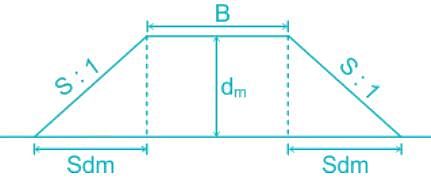Test: Earthwork Estimation - Civil Engineering (CE) MCQ
10 Questions MCQ Test Geomatics Engineering (Surveying) - Test: Earthwork Estimation
_________ is the application of controlled amounts of water to plants at needed intervals.
The estimated earthwork by the center line method for total center length = 40.10 m, breadth = 1.10 m and depth = 1 m is:
| 1 Crore+ students have signed up on EduRev. Have you? Download the App |
Name the type of irrigation, which is the oldest form of irrigation and has been in use for thousands of years.
For calculation of earth work, the free lift allowed is
________ sometimes also called as localized irrigation, low volume irrigation, or trickle irrigation.
Determine the approximate quantity of earthwork for a road in embankment having a length of 120 m on a uniform level ground. The width of formation is 10 m and side slopes are 3 ∶ 1. The heights of the bank at the ends are 1 m and 1.5 m, respectively. Use trapezoidal method considering average of areas at the two ends.
Name the system, where water falls drop by drop just at the position of roots and water is delivered at or near the root zone of plants, drop by drop.
What will be the amount of earthwork required to fill the plinth for a porch of 4.30 m long, 2 m wide and 0.5 m high?
________ is the injection of fertilizers, soil amendments, and other water-soluble products into an irrigation system.
Find the amount of earthwork from the mid-sectional area method, assuming there is no transverse slope, while the elevations at both the ends of the land with the same slope are 1 m and 1.6 m respectively, the width and length of the road is 10 m and 200 m respectively and the side slope is 2: 1.
|
19 videos|31 docs|35 tests
|
|
19 videos|31 docs|35 tests
|






















